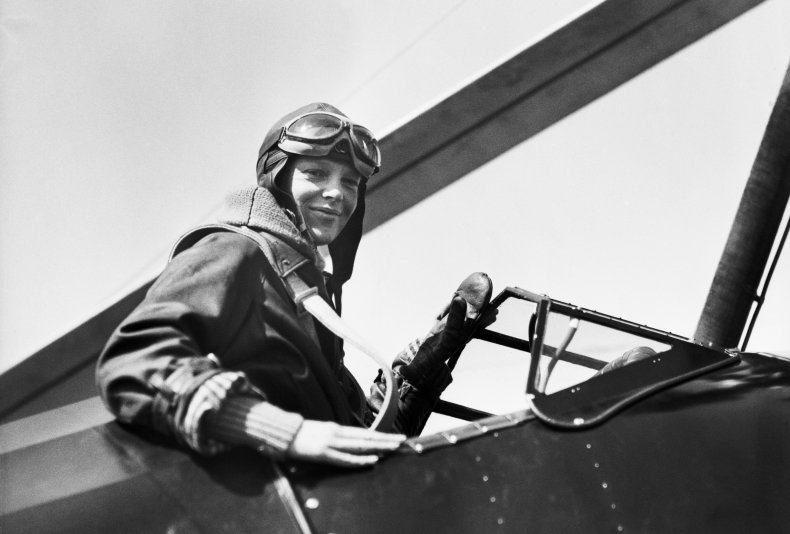Amelia Earhart and the Bizarre 'Hollow Earth' Conspiracy Theory About Her Disappearance
Today, July 24, marks the birth date of Amelia Earhart, the American aviation pioneer who broke records for women in flight and helped form the female pilot group the Ninety-Nines.
Earhart was born in Kansas in 1897 and served as a nurse's aid in World War 1. After her time watching pilots, she went on to take flying lessons in 1921 and earned her license that year, according to History.com.
And then she began breaking records.
Earhart became the first woman to fly solo above 14,000 feet; the first woman to fly solo across the Atlantic; the first woman to fly solo, non-stop, across the U.S., and much more.
On June 1 1937, Earhart set off on a mission to become the first person ever to fly around the world. She set off on her journey from Oakland, California, with navigator Fred Noonan.
By June 29, the two had reached Lae, in New Guinea. Their next stop was due to be Howland Island in the Pacific Ocean, but after taking off from Lae on July 2, the two disappeared.
A massive search for the pair was conducted, but they were never found. Earhart was declared dead on January 5, 1939, according to Britannica.
The Theories
Since Earhart's disappearance a number of theories have been put forward to explain what could have happened. Almost inevitably, conspiracy theories have emerged including that Earhart was captured by the Japanese and either died or was given a new identity and returned to the U.S.
And some seem outright strange.
In 2015, the New Dimensions blog, whilst publicizing the Hollow Earth Magazine, posited that Earhart was saved by beings called Agarthans who live in a civilization inside the Earth.
The blog states the Agarthans used teleportation technology to help the aviator before she hit the ocean which is why her plane was never found—though it's unclear if this is a genuinely held belief.
Newsweek has contacted the blog for comment.
For Richard Gillespie, executive director of The International Group for Historic Aircraft Recovery (TIGHAR), argues theories such as this do not hold water.
He told Newsweek: "I have come to believe the public and the media are so fascinated with Earhart, and the internet is so hungry for content, that anyone who has a theory, no matter how crazy, can get it out there."
TIGHAR is a non-profit foundation based in Pennsylvania that aims to promote responsible aviation archaeology and preservation.
Nikumaroro Landing
The group works with the mainstream belief that Earhart and Noonan ended up on an uninhabited patch of land formerly known as Gardner Island and now called Nikumaroro, part of the Phoenix Islands of Kiribati, and has launched twelve expeditions to the South Pacific. One mission set off as recently as 2017.
Gillespie told Newsweek the U.S. government's official explanation was that Earhart and Noonan ran out of fuel, crashed, and sank. He added: "It is the intuitive answer to the riddle, but there is no evidence to support it.
"Earhart never said she was going down; the massive 1937 Navy and Coast Guard search found no floating debris or oil slick; and six multi-million dollar hi-tech searches of the ocean bottom around Howland over the past 22 years have found nothing."
According to Gillespie, the Nikumaroro island landing theory is instead "more than likely" based on data and artifacts the group has collected.
"She sent radio distress calls, widely received and accepted as genuine at the time, for at least five nights," he said, but added that by the time search planes arrived the plane had been washed into the ocean by tides and surf.
He also pointed to bones found on the island which were recorded but subsequently lost. In 2018 Richard Jantz, professor emeritus of anthropology at the University of Tennessee Knoxville, studied the remains data and found indications they were Earhart's.
In any case, while there may still be contrasting theories on Earhart's disappearance, her legacy as a female aviation pioneer is steadfast today.


